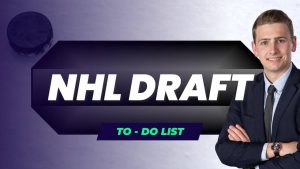[vc_row][vc_column][vc_column_text]
Insurance Coverage in the NHL
A few weeks ago, I wrote an article explaining some of the special risk insurance options available to professional hockey players. Following that article, I received some questions regarding players’ insurance coverage. Specifically about the coverage through the group-sponsored plan outlined in the CBA. If you’ve read my pension article, you’ll know that I like to take legal CBA jargon and simplify it into plain English. Here’s my attempt regarding insurance.
Life Insurance Coverage
Players have life insurance coverage amounting to $1,000,000 U.S. per player. This is for all players on an NHL roster at any point during the season. They also have accidental death insurance coverage equaling their salary, with a maximum of $15,000,000 U.S.
- Note: Life insurance gets paid when you die, no matter what. Whereas accidental death only gets paid if death occurs within a set of parameters outlined in the policy. You can find a more in-depth look at the difference between the two here.
Example: Player earning $2,500,000 per year passes away in a car accident.
The player’s beneficiary would receive a one-time lump sum payment of $1,000,000 U.S. from the life insurance policy. The beneficiary would also receive a one-time lump sum payment of $2,500,000 U.S.(equivalent to players season salary) from the accidental death policy (If dying in a car accident falls under the parameters within the accidental death policy).
Note: The spouse of any player on an NHL roster at any point during the season also has life insurance coverage of $250,000 U.S. and accidental death coverage of $100,000.
Disability Insurance Coverage
Players also have career-ending disability insurance. This will provide a one-time benefit in the event they sustain an injury under the following parameters:
“Disability shall be considered career-ending if the Player is continuously disabled for a period of 12 months and permanently prevented from playing professional hockey.”
The disability benefit looks like this:[/vc_column_text][dt_fancy_image image_id=”7899″ css=”.vc_custom_1638990282907{padding-top: 20px !important;padding-bottom: 20px !important;}”][vc_column_text css=”.vc_custom_1638991908318{padding-bottom: 20px !important;}”]
*For Players with less than forty-one (41) NHL Games played in their career (including games dressed for backup goaltenders) the maximum benefit would be $500,000 U.S.D
*Source – NHL CBA, Article 23, Page 149
[/vc_column_text][vc_column_text css=”.vc_custom_1638993210275{padding-top: 20px !important;padding-bottom: 20px !important;}”]
Serious Disability Benefit
In the event a player experiences a serious disability, they may be entitled to the following benefit:[/vc_column_text][dt_fancy_image image_id=”7903″ width=”600″ css=”.vc_custom_1638991818891{padding-top: 20px !important;padding-bottom: 20px !important;}”][vc_column_text css=”.vc_custom_1638991899932{padding-top: 20px !important;padding-bottom: 20px !important;}”]
*Loss includes loss of use
*Source – NHL CBA, Article 23, Page 150
[/vc_column_text][vc_column_text css=”.vc_custom_1638994316639{padding-top: 20px !important;}”]
Summary
The insurance provided through the CBA does provide some good protection for players. However, insurance coverage must be done on a case-by-case basis. For example, a 28-year-old player, earning $5,000,000 per year with a spouse, a few kids, and a home will have different insurance needs than an 18-year-old rookie on an ELC who is single and renting an apartment.
When you start exploring insurance options, consider a few things before agreeing to anything:
- Did your advisor or insurance agent conduct a needs analysis for you?
- Do you know how much the premiums on the insurance will be?
- Do you know what the commission is that the advisor or insurance agent will make from you purchasing the insurance?
Insurance can be very valuable from a “peace of mind” perspective. It can also be a useful tool from an investment perspective as your net worth grows (which I’ll discuss in a future article). The key is to not rush into anything until you feel comfortable or have received advice from someone you trust.[/vc_column_text][vc_column_text css=”.vc_custom_1638991889070{padding-top: 20px !important;padding-bottom: 20px !important;}”]
Sources
https://www.nhlpa.com/the-pa/cba
https://www.protective.com/learn/is-an-adandd-insurance-policy-the-same-as-having-a-life-insurance-policy[/vc_column_text][/vc_column][/vc_row]







